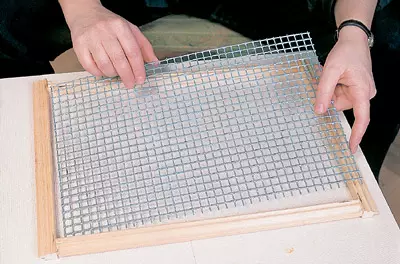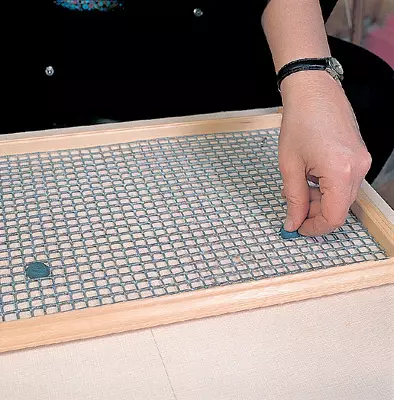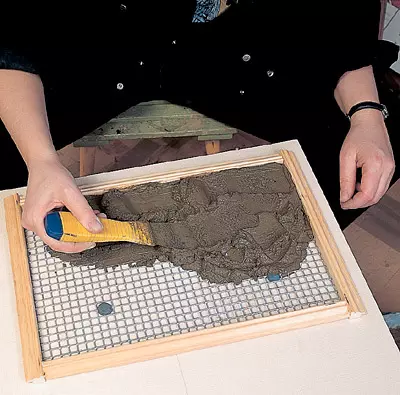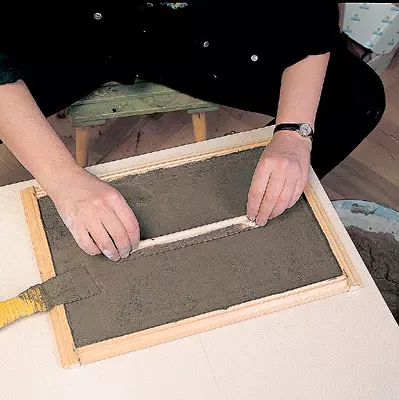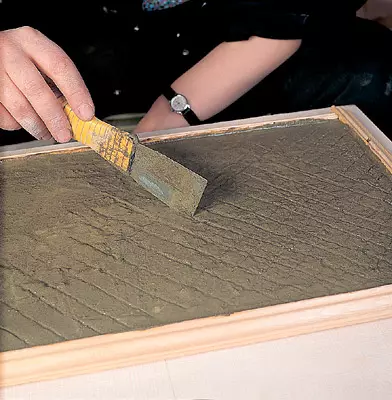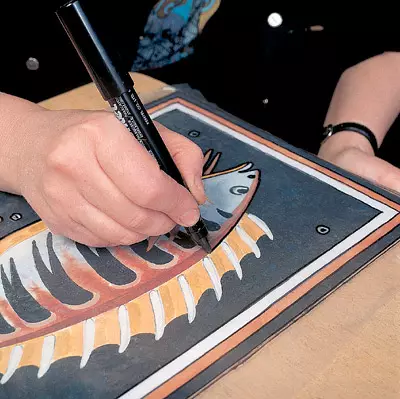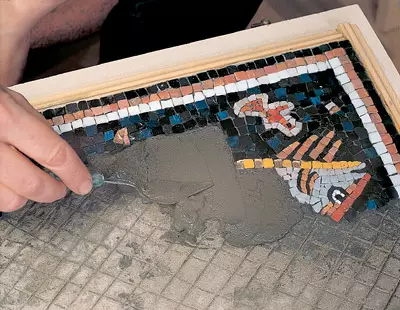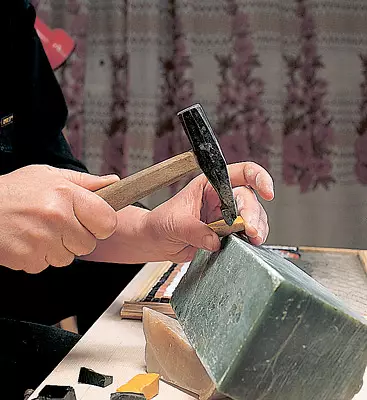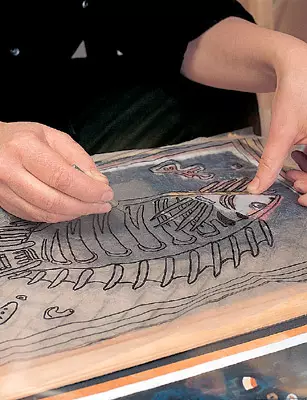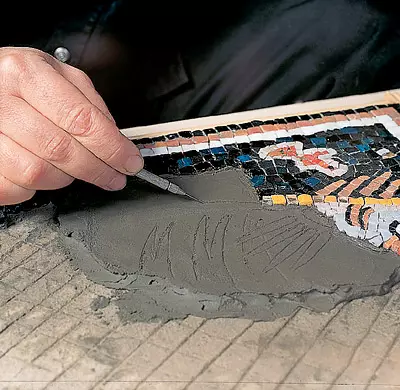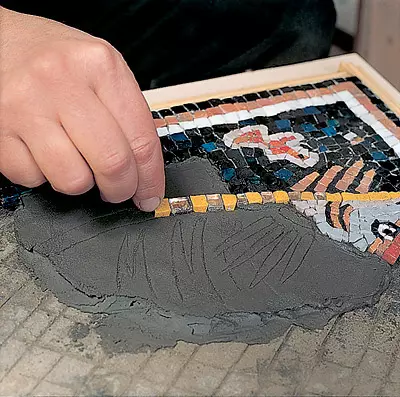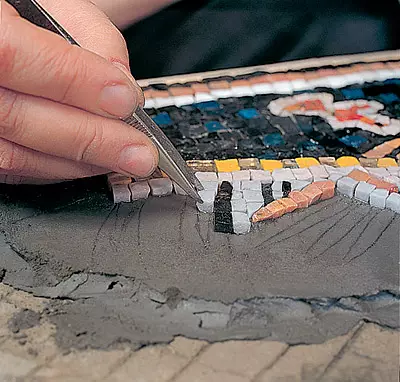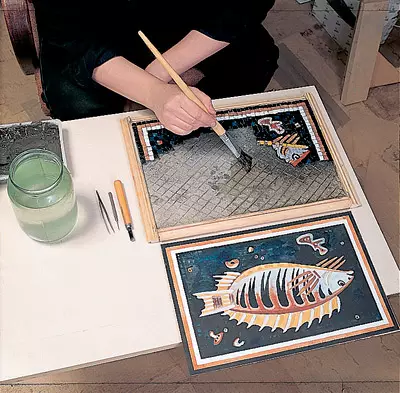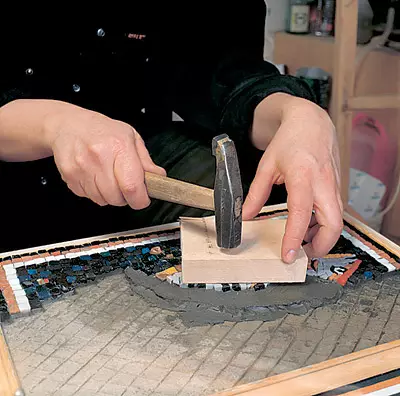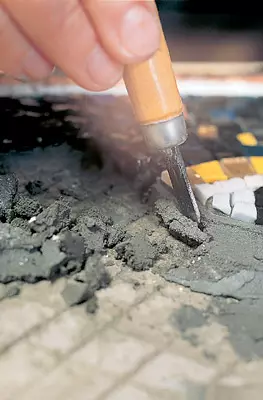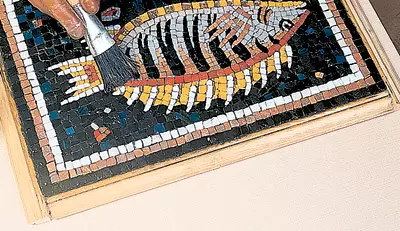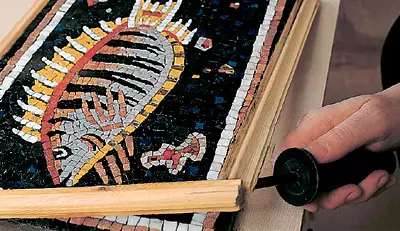Mosaic from smalt. Where to start, stages of work and the end result on the example of the creation of the Panno "Fish".
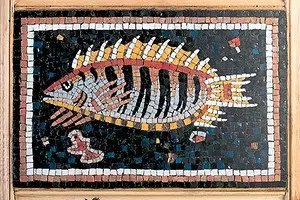
A huge white cockatoo closely looks at me through the gold-plated rods of the cell, from time to time demonstrating the exquisite jabs of feathers and making quite human sounds. Yaba was not surprised if the parrot suddenly asked who I am doing here. On the walls of the studio-workshop, where the events described occur, sketches and cardboard of monumental works conceived by the artist are hanging. Creative disorder indoors, contrary to waiting, no. Perhaps the character of the artist determines the material with which he has to work. This studio recruits the Byzantine and Roman mosaics. In order to creatively recreate the world of thousands of thousands of multi-colored pieces, patience is required, the ability to focus, on time to have everything you need at hand to ensure that the work of work on the work of art is not interrupted due to the omission and forgetful wizard. The instruments of the artist-mosaicist in the cheekbone lie on the desktop, opposite which is a sketch of mosaic. It feels that a person is working calm, thorough and balanced.
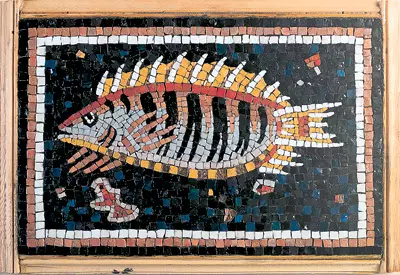
"Nerves soothes," Natalia Vladimirovna is joking on my question, why she chose the profession of a mosaicist. Indeed, it looks like psychotherapy, practiced in clinics, where patients are taught to make architectural structures from matches ...
So, where does the work on the mosaic begins? N.V. Eleelyanova believes that with the selection of the plot. It is determined by the peculiarities of the architectural and artistic environment in which the mosaic will be placed, primarily the scale of the planned work, as well as the nature of the customer and its interior requirements and the exterior of the building, landscape objects. In this case, a fragment of the mosaic is recruited for the pool or bathroom, conditionally called "Fish in the Black Sea".
Initially, sketch and cardboard work in color are made. Skarton is removed by the tracing pattern, which is directly used when a mosaic set to transfer the image to the working surface. The next stage is casting the plates on the same scale as cardboard. However, you can use the finished slab of the desired size. Our mosaic will have a size of 2030cm, the stove thickness will be 2 cm. To give a stiffness plate into it, fittings are laid (the chain grid, similar to it for cellular grids) and is poured with a solution prepared in the proportion one part of the cement of the brand 500 and above to four (five) sand parts. Before filling in the slab, bookmarks made of rubber or plasticine are installed, after removing which fasteners will be mounted in emptiness. The stove dries two to three days, in the process of solidification, it should be periodically watering with water, for better grasp solution. Typically, the plate is made rectangular or has a configuration of the pattern. In order to in the process of casting the solution, the solution was caught up and the seams of mosaic fragments when the drawing match was minimal, wooden or plastic formwork is made around the plate.
If the mosaic is placed directly on the wall (the so-called direct set), the reinforcement (the same cellular grid) is attached to the wall, the solution is applied to it, it is leveled under one level, it is maintained, after which it dries the same way as in the case described . Wall mosaic stacked upwards.
While the stove dries, the artist is engaged in preparing the palette. Under this it is understood as the selection of palettes on the colors under the sketch and slicer of smalts in the required quantity and in the module specified by the artist. The ring is smalt-responsible and only at first glance is a simple process. It is very important to have a professional and correctly sharpened tool. A piece of smalt is splitted with a specially sharpened under a stupid angle (65-70) of a winning hammer. The stern surface of the hammer is shot by a small chamfer, so the sharpening angle is almost close to 90. In order for the split smalt to occur exactly along the planned line, the angle of solid alloy with the sides of 2 cm and a length of 2 to 30 cm is placed under it. The blow should be accurate and sharp. "As in Karate," explains Natalia Vladimirovna. "The moment the moment needs to be inserted into the blow." Smalt modules can be different: the magnitude with the match head in micromozics and up to 10 cm, as in mosaics at the Metro station "Komsomolskaya".
Immediately before laying, the smalt is prepared by a solution under the smalt in the ratio one part of the cement of the brand 500 to two parts of the sand. Sometimes PVA aluminum or liquid glass is added for the plasticity. Single, the trunk on the surface of the plate is superimposed by a layer of solution, sufficient for the smalt to fall and not towered over the plane of the mosaic. The thickness of the layer depends on the size of the smalt module. If the dimensions of the mosaic do not allow it in one day, the layer of the solution under the smalt is covered by the allegedly the square to which the smalta can be laid.
On the raw sour cream-like layer of the solution is superimposed by the pattern - template, and on it with the help of sewing (knife, of any acute item), a picture is translated to the working surface. If the work on the mosaic takes several days, only the part of the figure that the artist is able to finish in the material is translated on the crude solution. Immediately after the translation of the picture begins the Smalt Book in the crude solution. If you cannot finish the fragment during the working day, then the remnants of an undertensive solution are cut into the figure and removed.
The next day, everything is repeated by the scheme described above. It should be remembered that the old solution cannot be used. At the beginning of the new working day, it is necessary to water the water fragment of the previous day so that the solution has acquired strength.
It happens that at the end of the operation of the mosaic turns out to be covered by a cement raid, which appeared in the smalt. It must be washed with a 10% solution of hydrochloric acid. Now you can remove bookmarks and install fasteners (wooden plugs, metal pins, wire, etc.).
Mosaic, which we in classical technology scored from Smalt-Visantine. The Roman mosaic is also recruited. Its main difference from the Byzantine - the need for surface grinding. Vrim mosaic instead of smalt is largely used natural stones. In my opinion, Mosaic from Natalia Vladimirovna, despite the simplest plot, came out on Divo good. The Yabi agreed to hind this into the boring tiled wall in her bathroom.
However, observations of the work of the master did not pass for me for nothing. I decided to acquire my own instrument and material and continue artistic experiments to start in your toilet, and then- as mastery grows, move to the floor of the bathroom. I would like to believe that my future creations will not refuse home and guests to use Plumbing. We will not, however, to make and check in practice.
Our advice
Be sure to wet the mosaic fragments scored on the eve.
| Stop fittings in formwork. |
| Installing plasticine bookmarks to fasteners. |
| Plate casting (solution laying). |
| Align the surface of the plate. |
| Applying notches on a slightly dried surface of the slab. |
| Removing the carton carton pattern. |
| Applying a thin layer of a solution under the smalt. |
| Rock smalt. |
| Translation of the Cement Drawing with a trash-template. |
| Deepening the pattern with sewing. |
| The beginning of a set of mosaic on the fragment of the pattern. |
| Alignment of individual, protruding over the surface of the mosaic, modules under the overall level with a hammer. |
| Laying small modules using tweezers. |
| Wetting the surface of the plate for better decay of the solution. |
| Alignment of mosaic on a plane with a wooden bar. |
| Removal of excess solutions from the surface of the plate at the end of the working day. |
| Removal of cement plaque from the surface of the mosaic with a solution of hydrochloric acid (two or three days after the final drying of the plate). |
| Deleting formwork. |

